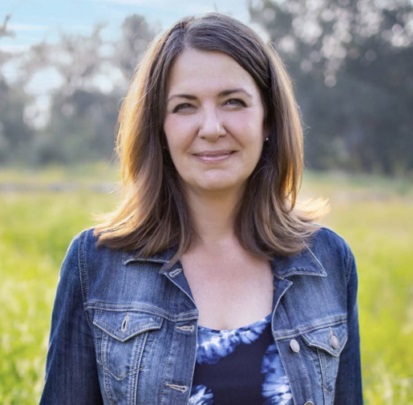Alberta
Canadians owe a debt to Premier Danielle Smith

From the Frontier Centre for Public Policy
In recent days, Premier Smith has endured criticism from many people about her recent announcements relating to treatments for what is often described as gender transition.
Instead, she deserves praise for decisions that are as important for how they were made as for the gender transition issues that concern her and her colleagues. Her actions on this matter demonstrate how public policy should be developed and explained.
The most important quality of the recent policy announcements by the Alberta government is that they are evidence based.
There is an emerging consensus outside Canada that the evidence supporting pharmacological and surgical procedures to change genders in minors is either very weak or nonexistent.
Sweden, Finland, the UK and Norway have restricted or forbidden the use of these treatments on minors, as have twenty-three American states. Ms. Smith referred to these in her press conference announcing the changes her government is making.
Leaders in other countries have done this after conducting detailed studies including one by the UK High Court of Justice and another by Dr. Hilary Cass, a former President of the Royal College of Pediatrics and Child Health in the United Kingdom
Dr. Cass is an independent expert commissioned to provide advice to the National Health Service on gender treatments. She concluded that “evidence on the appropriate management of children with gender incongruence is inconclusive both nationally and internationally’’.
The second reason the decisions taken by Alberta are important is that they were taken despite ideology advocated by the Government of Canada and the unwillingness of federal officials including the Prime Minster to support their opposition to the Alberta policies with any evidence.
In his initial comments, the Prime Minister made no reference to any of the many studies that have been done describing the dangers of pharmacological and surgical procedures to change the gender of minor children.
He also displayed no understanding of the experiences of other countries on this matter. He did not refer to the Cass report and its seminal conclusions.
The comments by Federal Health Minister Mark Holland lacked any evidence the public could use. He also used offensive rhetoric.
Mr. Holland described the Alberta decisions as being behaviour that is “extremely dangerous to engage in …. which is, I think, playing politics about children’s lives.” He also referred to the “devastation that its going to bring”, referring to the Alberta changes.
Federal communications marked by a factual vacuum and excessive language are not going to help resolve serious differences of opinion on serious issues. They are also not condusive to good relations between the federal government and an important province.
The third and particularly significant reason the recent changes announced by the Alberta government are so important is that they will protect children.
Adolescence, a phase of child development that has been with us for thousands of years, is an important part of everyone’s life.
It is a vital part of what it means to be human. Delaying or blocking it is dangerous, something that many observers have noted but that the Prime Minister and the Minister of Health do not recognize.
Federal leaders need to inform themselves, particularly about the negative impact of puberty blockers on bone and brain development and the lifelong medical attention many transitioners will need because of the pharmacological and surgical procedures used on them to change genders.
The Prime Minister and the Minister of Health should also learn about the increasingly large number of transitioners who regret their transition and later seek to reverse it. Their situation is particularly tragic because many of the negative consequences of changing genders in children cannot be reversed.
Federal leaders also support hiding from parents the decisions children make in schools about the pronouns they use to describe their genders. This is another practice that many feel is harmful and divisive.
The federal perspective on this is unreasonable.
Our species survived over the centuries because the first priority for most parents is their children and most take good care of them.
There is no basis for a lack of trust in them and in the relatively few cases where parents do not provide appropriate care, the child protection laws come into play.
It is particularly important that federal leaders recognize the grave problems that puberty blockers and related surgeries often pose for children who are gays or lesbians.
These children sometimes display some of the attributes of the opposite sex as they grow, and these are often misinterpreted as gender dysphoria. They then get treated for a problem they don’t have, with serious lifelong consequences.
Unfortunately, this happens in many Canadian pediatric hospitals.
There is nothing wrong with these children. They should be allowed to develop and grow in their own way and be who they are. That means no puberty blockers or surgeries to change them.
The fourth reason to respect the new directions on gender issues Ms. Smith and her colleagues have decided upon is the moderation displayed by the Alberta government in putting them forward and communicating with the public about them.
The language used has been understated. The changes are lawful in every respect including in relation to the Charter of Rights and Freedom and other legislation.
The evidence has been clearly presented in a way most citizens can readily understand and great care has been taken to deal with those who may have concerns thoughtfully, including allowing time for debate and discussion before the changes are made.
This is a good example of how governments should behave. Federal leaders should show some respect for the approaches taken by Ms. Smith and her colleagues as they dealt with a very complex issue.
The final reason for the importance of the Alberta approach is that it has avoided many of the problems associated with medical practice standards and regulation that are so evident in Canada and which have been a major cause of the difficulties our country faces on gender issues.
Provincial Colleges of Physicians and Surgeons and many regulators elsewhere regulate doctors based largely on prevailing practices by physicians rather than clinical outcomes.
This means that there have been many cases over the years, in Canada and elsewhere, where evidence to support medical procedures has been lacking. Current practices toward gender dysphoria in Canada and some US states are examples.
In these cases, if something is done often enough by enough doctors, that procedure becomes the standard and not clinical outcomes. This often leads to perverse outcomes that everyone ultimately regrets.
In the years to come, unless we change course soon and unless others follow the Alberta path, people will be wondering how the problems summarized in this article developed and why we damaged so many children by an approach defined more by ideology than factual reality.
David MacKinnon is a Senior Fellow at the Frontier Centre for Public Policy
Alberta
Alberta school boards required to meet new standards for school library materials with regard to sexual content

Alberta’s government has introduced new standards to ensure school library materials are age-appropriate.
School libraries should be safe and supportive places where students can learn and explore without being exposed to inappropriate sexual content. However, in the absence of a consistent standard for selecting age-appropriate library materials, school boards have taken different approaches, leading to concerns about safeguards in place.
In response to these concerns, and informed by feedback from education partners and the public, Alberta’s government has created standards to provide school boards with clear direction on the selection, availability and access to school library materials, such as books.
“Our actions to ensure that materials in school libraries don’t expose children to sexual content were never about banning books. These new standards are to ensure that school boards have clear guidance to ensure age-appropriate access to school library materials, while reflecting the values and priorities of Albertans.”
The new standards set clear expectations for school library materials with regard to sexual content and require school boards to implement policies to support these standards.
Standards for school library materials
Under the new standards, school libraries are not permitted to include library materials containing explicit sexual content. Non-explicit sexual content may be accessible to students in Grade 10 and above, provided it is age-appropriate.
“Protecting kids from explicit content is common sense. LGBTQ youth, like all children, deserve to see themselves in stories that are age-appropriate, supportive and affirming – not in material that sexualizes or confuses them.”
School boards must also regularly review their school library collections, publish a full list of available materials and ensure that a staff member supervises students’ access to school library materials. School boards will have to remove any materials with explicit sexual content from their school libraries by October 1.
School board policies and procedures
All school boards must have publicly available policies that align with the new standards for selecting and managing library materials by January 1, 2026. School boards can either create new policies or update existing ones to meet these requirements.
These policies must outline how school library materials are selected and reviewed, how staff supervise students’ access throughout the school day, and how a student, parent, school board employee or other member of the school community can request a review or removal of materials in the school library. School boards are also required to clearly communicate these policies to employees, students and parents before January 2026.
“A robust, grade- and age-appropriate library catalogue is vital for student success. We welcome the ministry’s initiative to establish consistent standards and appreciate the ongoing consultation to help craft a plan that will serve our families and communities well.”
“Red Deer Public Schools welcomes the new provincial standards for school library materials. Our division is committed to maintaining welcoming, respectful learning spaces where students can grow and thrive. Under the new standards for school libraries, we remain dedicated to providing learning resources that reflect our values and support student success.”
Quick facts
- The new standards will apply to public, separate, francophone, charter and independent schools.
- The ministerial order does not apply to municipal libraries located within schools or materials selected for use by teachers as learning and teaching resources.
- From May 26 to June 6, almost 80,000 people completed an online survey to provide feedback on the creation of consistent standards to ensure the age-appropriateness of materials available to students in school libraries.
Related information
- Ministerial Order
- School library standards engagement
- Reference Materials: Content warning: this document contains graphic content that may be disturbing to viewers and is not appropriate for young viewers. Viewer discretion is advised.
Alberta
Fourteen regional advisory councils will shape health care planning and delivery in Alberta

Regional health councils give Albertans a voice
Albertans want a health care system that reflects where they live and adapts to the unique needs of their communities. As part of the province’s health care refocus, Alberta’s government committed to strengthening community voices by providing more opportunities for Albertans to bring forward their local priorities and offer input on how to improve the system.
The regional advisory councils, made up of 150 members from 71 communities, will advise Alberta’s four health ministries and the newly refocused health agencies: Primary Care Alberta, Acute Care Alberta, Assisted Living Alberta and Recovery Alberta. Each council will explore solutions to local challenges and identify opportunities for the health system to better support community decision-making.
“By hearing first-hand community feedback directly, we can build a system that is more responsive, more inclusive and ultimately more effective for everyone. I am looking forward to hearing the councils’ insights, perspectives and solutions to improve health care in all corners of our province.”
“Regional advisory councils will strengthen acute care by giving communities a direct voice. Their insights will help us address local needs, improve patient outcomes and ensure timely access to hospital services.”
“A ‘one-size-fits-all’ approach does not address unique regional needs when it comes to mental health and addiction challenges. These councils will help us hear directly from communities, allowing us to tailor supports and services to meet the needs of Albertans where they are.”
“Every community has unique needs, especially when it comes to seniors and vulnerable populations. These regional advisory councils will help us better understand those needs and ensure that assisted living services are shaped by the people who rely on them.”
Members include Albertans from all walks of life, health care workers, community leaders, Indigenous and municipal representatives, and others with a strong tie to their region. About one-third of members work in health care, and more than half of the council chairs are health professionals. Almost one-quarter are elected municipal officials, including 10 serving as chairs or vice-chairs. Ten councils also include a representative from a local health foundation.
Council members will share local and regional perspectives on health care services, planning and priorities to help ensure decisions reflect the realities of their communities. By engaging with residents, providers and organizations, they will gather feedback, identify challenges and bring forward ideas that may not otherwise reach government.
Through collaboration and community-informed solutions, members will help make the health system more responsive, accessible and better able to meet the needs of Albertans across the province.
“As Primary Care Alberta works to improve access to primary health care services and programs across Alberta, we are grateful to have the opportunity to tap into a dedicated group of community leaders and representatives. These people know their communities and local needs, and we look forward to learning from their experiences and knowledge as we shape the future of primary care in Alberta.”
“The regional advisory councils will help to bring forward the voices of patients, families and front-line providers from every corner of Alberta. Their insights will help us plan smarter and deliver care that’s timely, effective and truly local. We look forward to working closely with them to strengthen hospital and surgical services across the province.”
“Nobody understands the health care challenges unique to a community better than the people who live there. The regional health advisory councils are made up of those living and working on the front lines across the province, ensuring we are getting the perspective of Albertans most affected by our health care system.”
“Alongside Recovery Alberta’s staff and physician team, these regional advisory councils will build upon the high standard of mental health, addiction and correctional health services delivered in Alberta.”
Indigenous Advisory Council
Alberta’s government continues to work directly with Indigenous leaders across the province to establish the Indigenous Advisory Council to strengthen health care services for First Nation, Métis and Inuit communities.
With up to 22 members, including Indigenous health care workers, community leaders and individuals receiving health care services, the council will represent diverse perspectives across Alberta. Members will provide community perspectives about clinical service planning, capital projects, workforce development and cultural integration in health care.
Related information
-

 Also Interesting2 days ago
Also Interesting2 days ago9 Things You Should Know About PK/PD in Drug Research
-

 Business2 days ago
Business2 days ago‘Experts’ Warned Free Markets Would Ruin Argentina — Looks Like They Were Dead Wrong
-

 Bruce Dowbiggin2 days ago
Bruce Dowbiggin2 days agoThe Covid 19 Disaster: When Do We Get The Apologies?
-

 Business2 days ago
Business2 days agoCannabis Legalization Is Starting to Look Like a Really Dumb Idea
-

 Media2 days ago
Media2 days agoCBC journalist quits, accuses outlet of anti-Conservative bias and censorship
-

 Business2 days ago
Business2 days agoCarney government should recognize that private sector drives Canada’s economy
-

 Automotive2 days ago
Automotive2 days agoAmerica’s EV Industry Must Now Compete On A Level Playing Field
-

 Alberta1 day ago
Alberta1 day agoFourteen regional advisory councils will shape health care planning and delivery in Alberta





